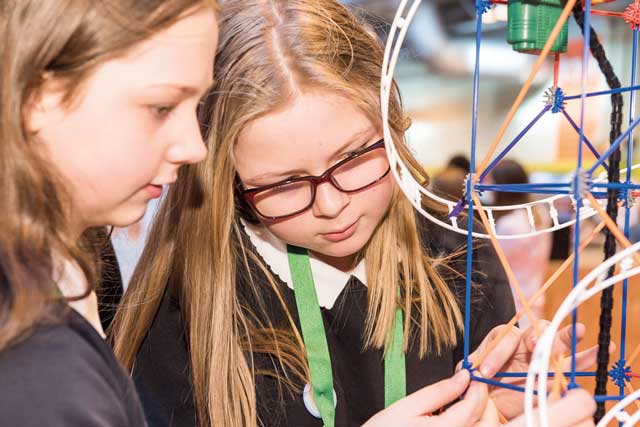 Girls are less likely than boys to think they could become engineers, according to a new report from EngineeringUK.
Girls are less likely than boys to think they could become engineers, according to a new report from EngineeringUK.
The imbalance occurs in all age groups and increases with age, according to the briefing Gender Disparity in Engineering published this month.
In the 11-14 age group, only 60% of girls think they could become an engineer if they wanted to, compared with 72% of boys. This drops to 53% in the 16-19 age range, where only a quarter of girls say they would consider a career in engineering.
Girls drop out of the education stream at every decision point, the briefing says, despite generally performing better than boys in science, technology, engineering and maths subjects at school. Women make up just 12% of the engineering industry workforce.
Evidence shows gender differences in understanding of and interest in engineering as well as in perceptions of self-efficacy (an individual’s belief in his or her innate ability to achieve goals or succeed) and identity are key factors when making subject and career choices. Girls are not only less knowledgeable about engineering and how to become an engineer, but also less likely to seek careers advice from others.
EngineeringUK chief executive Mark Titterington said: “The gender imbalance in engineering means we are missing out on great talent which, given the shortfalls that our latest research highlights, we can ill afford to do. Equally, women are also generally missing out on really exciting careers in engineering and contributing solutions to some of society’s biggest challenges. We need to do more to show girls, at the earliest age possible, what modern engineering is all about.”
He added: “We know that participating in hands-on activities and speaking to an engineer have a positive impact on young people’s knowledge of engineering jobs, and that is particularly true for girls. We want to build on that with sustained outreach and engagement activity, together with supporting communications campaigns such as This is Engineering, to inspire the next generation of girls to become engineers.”
Gender Disparity in Engineering builds on the data and analysis in the EngineeringUK 2018 State of Engineering report and gives an overview of female progression along the STEM skills route through education, as well as of women in the engineering workforce. It examines the underlying reasons for female under-representation and looks at both the business case for and the barriers to getting more women in the industry.
The briefing is available from www.engineeringuk.com/gender

